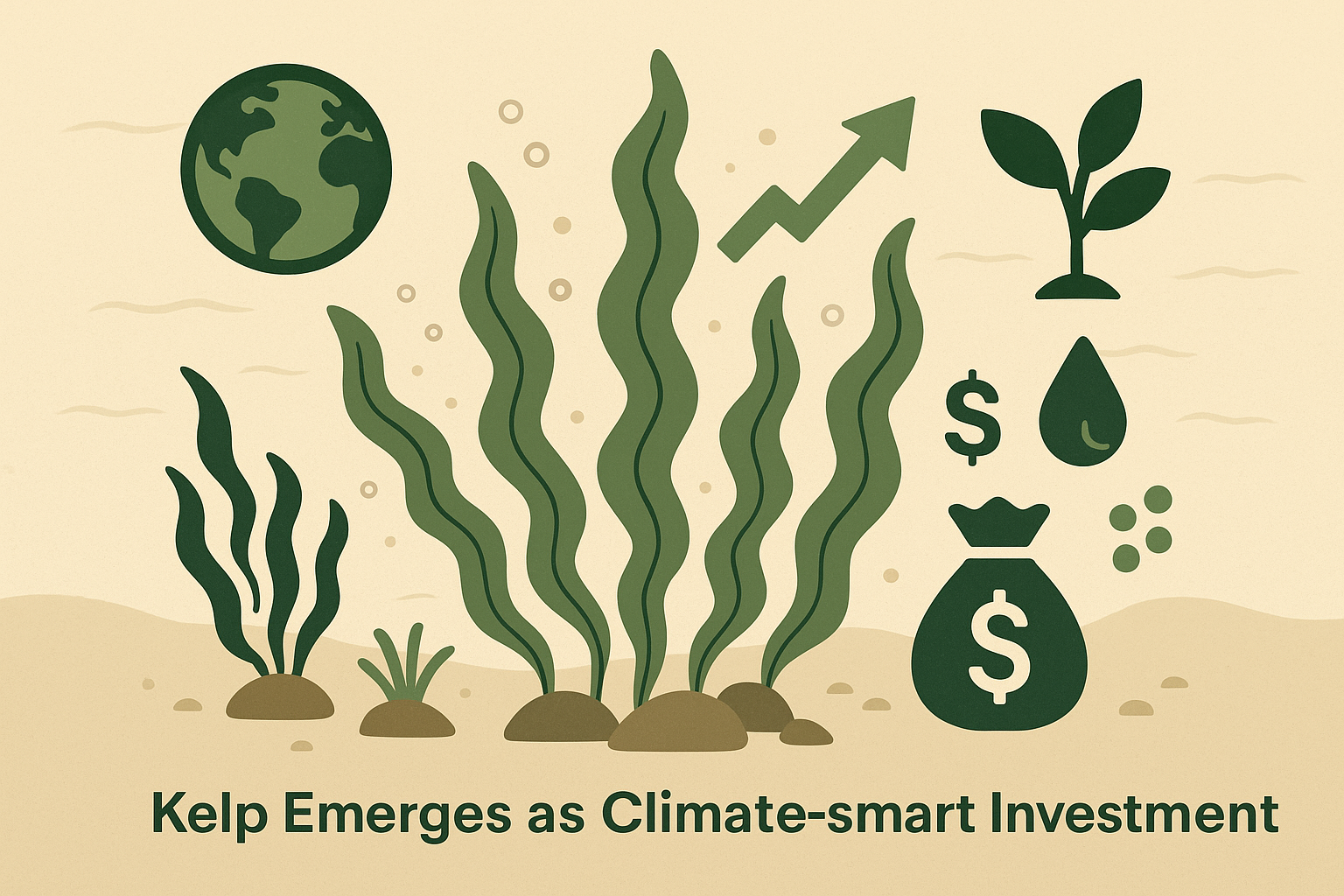As climate change reshapes global economies and investment strategies, a new contender has entered the spotlight: kelp. Once considered a niche ocean crop, kelp is now being hailed as a climate-smart asset with immense potential across food, agriculture, cosmetics, pharmaceuticals, and even renewable materials. With growing interest from institutional investors and green-tech innovators, kelp is rapidly transitioning from a sustainability side note to a major player in emerging industries.
The Rise of Seaweed in the Sustainable Economy
Kelp farming is gaining traction for its low environmental impact and high productivity. Unlike land-based crops, kelp requires no freshwater, fertilizers, or arable land. It absorbs carbon dioxide and nitrogen from the ocean, helping to mitigate climate change while improving marine ecosystems.
According to a recent Yahoo Finance feature, the global seaweed market is projected to surpass $30 billion by 2030, driven by increasing demand for plant-based and sustainable inputs. Companies like Ocean Rainforest, Kelp Blue, and Sea6 Energy are scaling production and attracting climate-conscious investors looking for regenerative solutions with long-term scalability.
Why This Matters for Investors
Kelp presents a rare convergence of profitability and sustainability. Investors are increasingly under pressure to align portfolios with ESG (Environmental, Social, Governance) mandates, and kelp offers a compelling, tangible option. Its applications are vast: from biodegradable packaging to meat alternatives, carbon sequestration credits to nutrient-rich fertilizers.
“Kelp is one of the most exciting developments in climate-smart agriculture and the blue economy,” said Susan Langdon, a senior analyst at GreenCap Investments. “It meets multiple goals at once: food security, climate resilience, and biodiversity restoration.”
The U.S. and Canada are seeing a surge in seaweed start-ups backed by venture capital, impact funds, and government subsidies. Europe, particularly Norway and the Netherlands, is also emerging as a stronghold for marine agriculture innovation.
Future Trends to Watch
- Carbon Markets: As carbon offset programs mature, kelp farms could become valuable assets for generating blue carbon credits.
- Alternative Proteins: With the plant-based food market expected to reach $160 billion globally by 2030 (Bloomberg Intelligence), kelp-based proteins offer a nutrient-dense and eco-friendly alternative.
- Circular Bioproducts: Kelp is being used to create packaging, textiles, and even biofuels, aligning with circular economy goals.
Key Investment Insight
Investors looking to diversify into climate-resilient and ESG-compliant sectors should closely monitor the kelp industry. Early movers—whether start-ups or publicly traded firms expanding into seaweed-based products—may offer significant growth potential.
Due diligence should focus on operational scalability, regional regulatory support, and partnerships with major buyers in the food, cosmetics, or agriculture sectors. With the right strategy, kelp could turn out to be more than just a superfood—it could be a super investment.
Stay ahead of the curve. Follow MoneyNews.Today for expert analysis on tomorrow’s industries, today.





